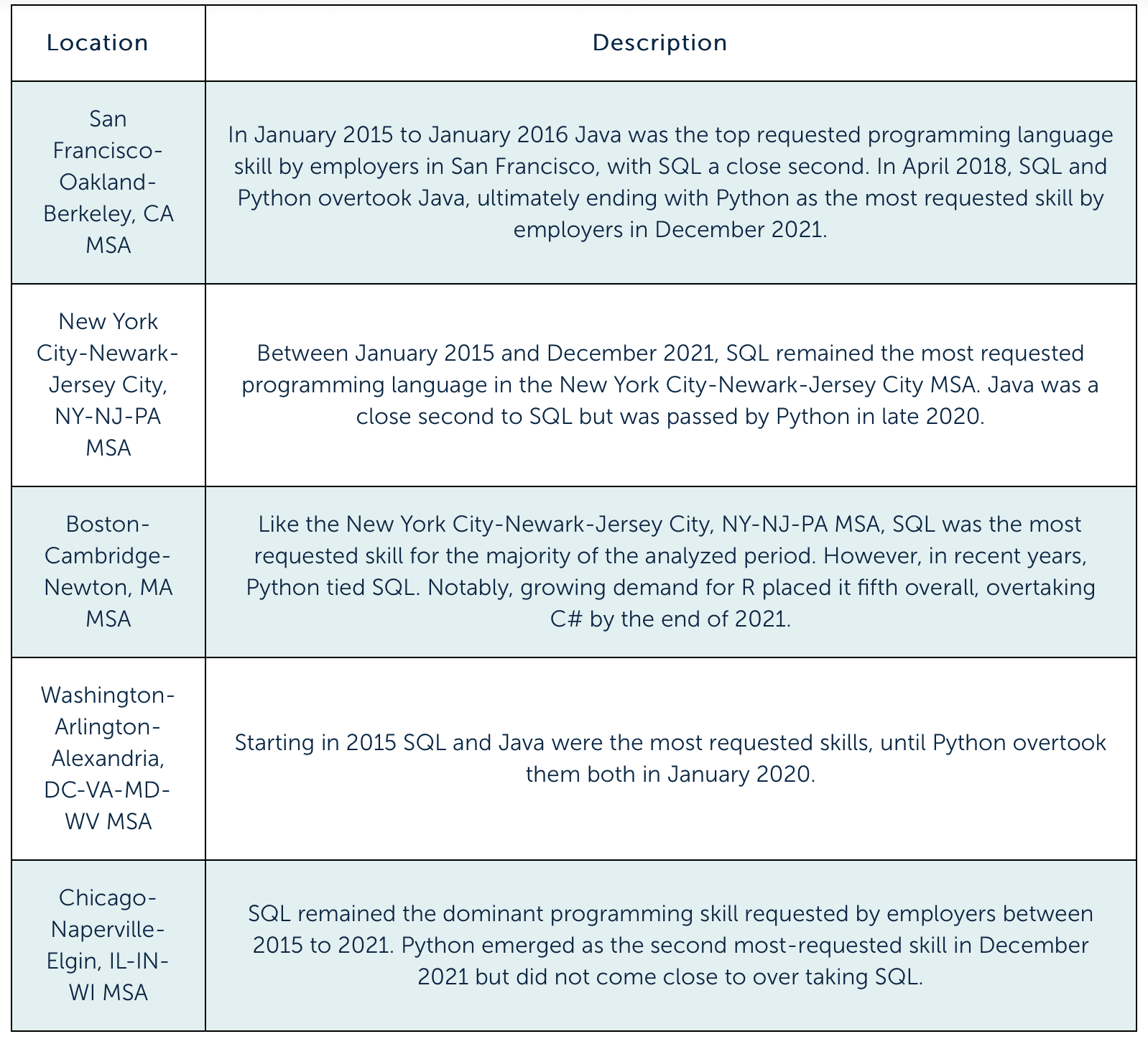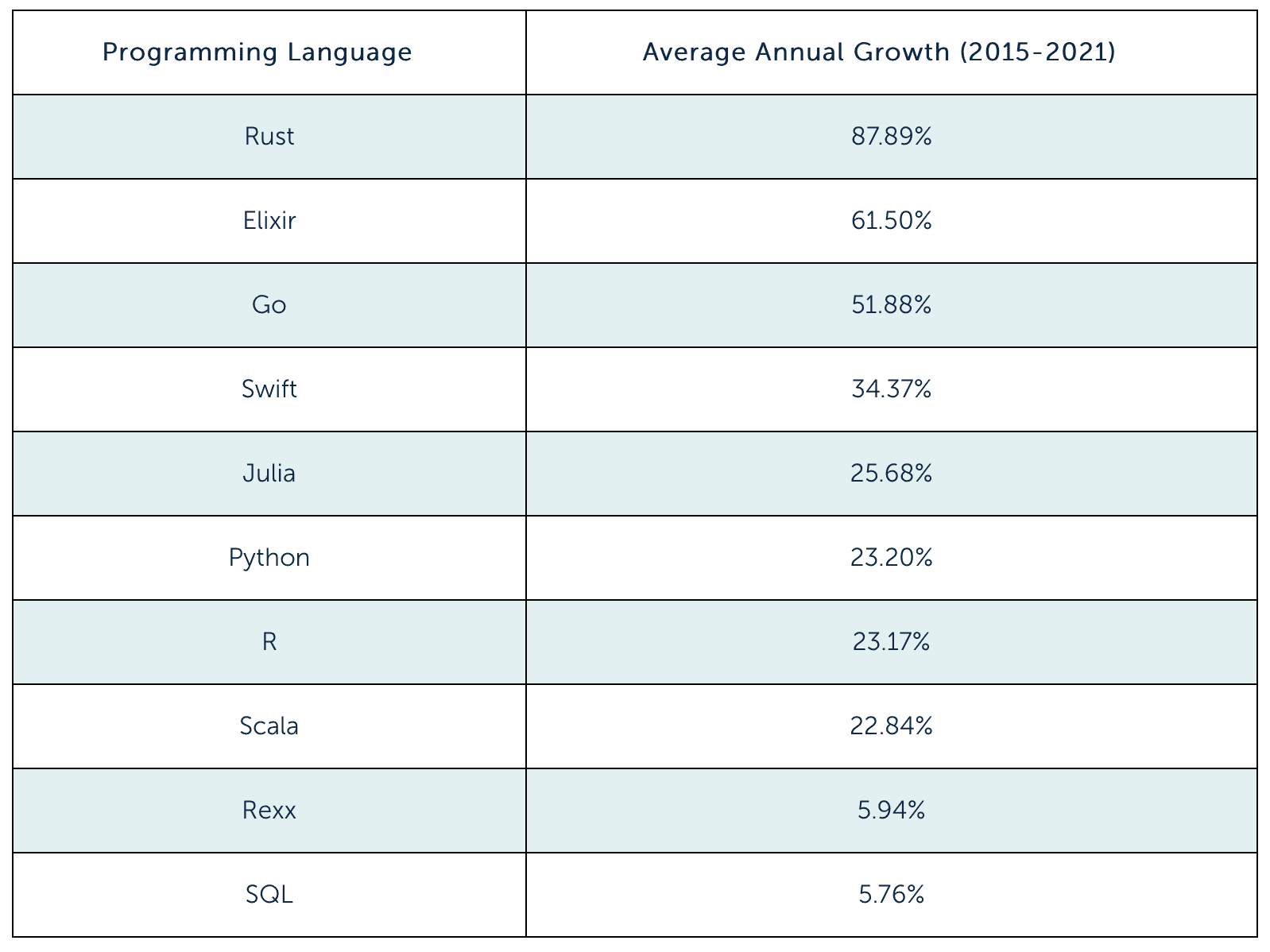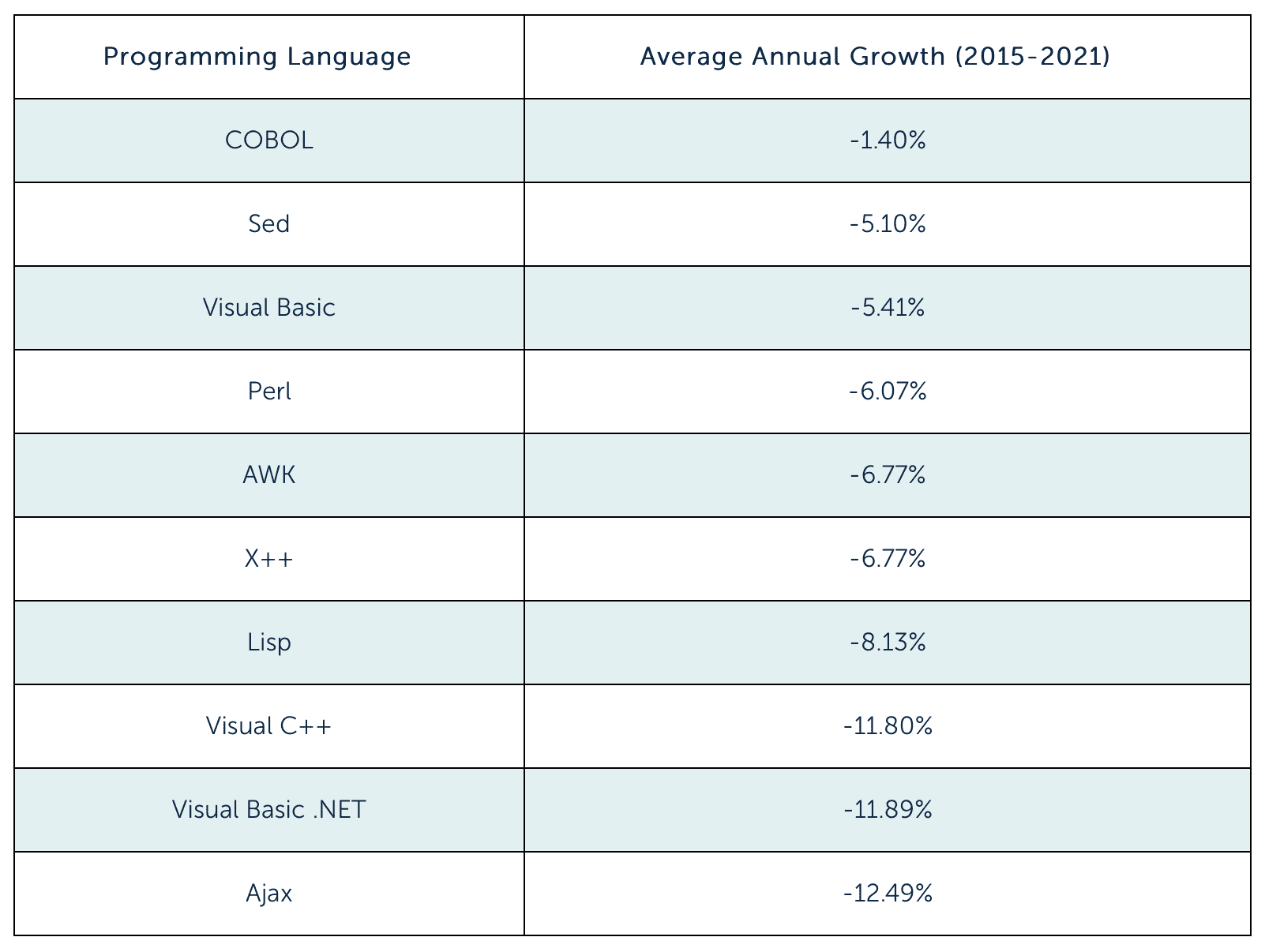Prepare your graduates for today's and tomorrow’s tech jobs—here’s how
Offer coursework in in-demand languages like Python, SQL, Go, and Swift
November 9, 2022
What do data scientists, web developers, business analysts, and software engineers have in common? Each of these jobs requires the use of programming languages Python, SQL, or both. While programming Java and JavaScript have remained among the top five most requested programming languages by employers since 2015, Python and SQL have now largely uprooted Java at the top of the list.
What has enabled Python to grow so quickly?
According to Forbes, Python is more unstructured than a language like Java, making it easier to learn and use. Python’s user forgivability and versatility allow developers to use different programming styles, thus appealing to a variety of users. Python is also compatible with emerging fields such as artificial intelligence and machine learning.
Why SQL?
Unlike Python, SQL has been around for over 50 years and has remained the preferred programming language for database management. It is a universal language easily transferable to other disciplines and languages and is used by almost every organization in tech. CodeOp highlights SQL as one of the easiest programming languages to learn and states that it should be one of the first folks should study when pursuing a career in data science.
LAUNCHING A DATA ANALYTICS PROGRAM? HERE’S WHAT YOU NEED TO KNOW
Teach Python and SQL to Prepare Students for Today’s Jobs
Programming languages Python and SQL have emerged as top skills across all technology US hubs, indicating programs should confer these skills to best prepare future graduates to meet employer demand. Demand for programming languages fluctuates and differs regionally but keeping up with and teaching the most-demanded languages will prepare your graduates for success. The table below demonstrate how demand for programming languages has changed over time in major tech hubs like San Francisco, New York, and Boston.
Programming Languages Requested in the Top Technology Hubs Nationwide

EXPLORE THE TOP SKILLS REQUESTED IN YOUR STATE
Offer Coursework in Fast-Growing Languages Like Go and Swift to Prepare Students for Tomorrow’s Jobs
The top three fastest-growing programming languages are Rust, Elixir, and Go. According to HackerRank, Go is the number one language developers want to learn. Consider offering an elective in Go to meet growing demand. Notably, Python and SQL are the sixth and tenth fastest-growing programming languages in addition to being in high demand already.
Fastest Growing Programming Languages in the US

At the same time, programming languages like C are experiencing far smaller increases in demand (i.e., average annual growth of 1.58%). And languages like COBOL and Perl are falling out of favor and declining in demand. Unless taught in a particular partnership or setting that will continue to merit this investment (e.g., DC-area schools have noted some government employees still need COBOL expertise for their legacy programs), courses still teaching these languages may be ready for retirement.
Programming Languages with the Slowest Growth in the US

Prepare for obstacles in updating coursework to meet fast-changing employer demand
Of course, in-demand tech skills evolve quickly, and it can be challenging to keep pace with changing labor market demand. Ensure your team reviews programs’ relevancy biannually through labor market and competitor data. Interview hiring managers, practitioners, and employers from leading-edge firms to understand current demand and anticipate changing skills.
LAUNCHING TECH PROGRAMS? HERE’S HOW TO MAKE THEM STAND OUT
Finding instructors with sufficient expertise in bleeding-edge technologies can also be a challenge. Consider expanding support for inexperienced instructors through additional training and pairing assistant instructors with a mentor to create a talent pipeline.
To best prepare graduates to meet employer demand, ensure your programs confer Python and SQL. Stand out from competitors and prepare graduates for tomorrow’s employer demand by offering electives conferring Go or Rust. Finally, stay on top of an ever-changing tech world by reviewing programs’ relevancy through labor and competitor data and referencing industry practitioners.
More Blogs

What it takes to win in grad and adult enrollment today

Our new staffing model playbook for higher ed CMOs
